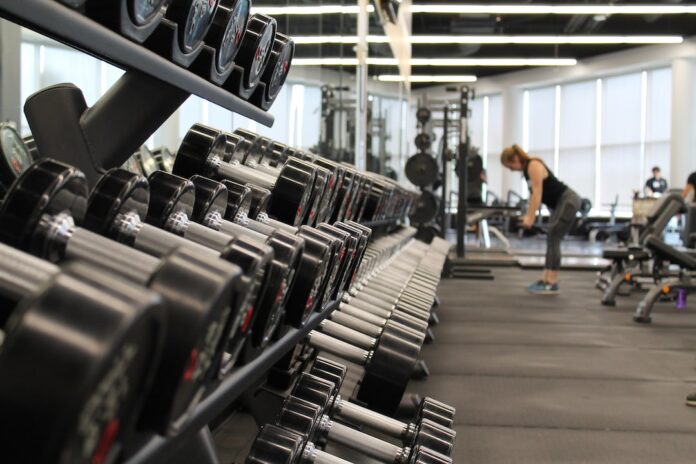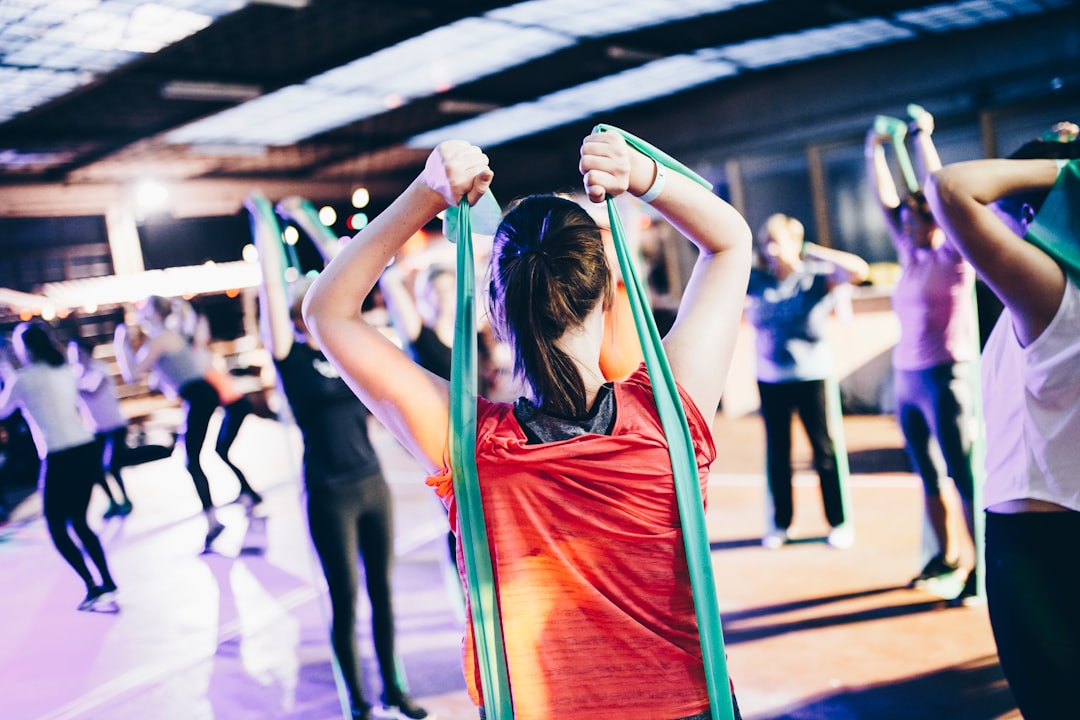Introduction
Cycling is a great way to get fit and stay healthy. It’s an excellent form of exercise that can be enjoyed by people of all ages and fitness levels. Cycling can help to improve your cardiovascular health, strengthen your muscles, and build endurance. Plus, it’s an enjoyable activity that can be done alone or with friends. In this guide, we’ll discuss the basics of cycling for fitness, including what to look for in a bike, how to get started, and what to expect.
What Bike Is Right For You?
Subheading
The first step to getting started with cycling for fitness is to find the right bike for you. There are several factors to consider, such as the type of terrain you’ll be riding on and the type of riding you plan to do. Road bikes are great for riding on pavement, while mountain bikes are better suited for off-road trails. Hybrid bikes are a good option for those who want the best of both worlds.
When shopping for a bike, be sure to visit a bike shop to get properly fitted for the right size. The fit of the bike is important for your comfort and safety while riding. It’s also important to consider the quality of the components. Higher-end bikes tend to have better components and better performance.
Getting Started
Subheading
Once you have the right bike, it’s time to get started with cycling for fitness. Start by riding on flat, paved surfaces with minimal traffic. This will give you a chance to get used to the bike and become comfortable with the basics of riding.
It’s important to start slow and gradually increase the intensity of your rides. Start with rides that are no longer than 30 minutes in duration and gradually increase the length and intensity of your rides. This will help to build your endurance and strength.
Expectations
Subheading
As you continue to ride, you’ll begin to notice improvements in your fitness level. Cycling is an excellent form of cardio exercise, so you’ll likely see improvements in your endurance and overall cardiovascular health. You may also notice improvements in muscle strength and flexibility.
It’s important to set realistic expectations for your cycling goals. Set short-term goals that are achievable, such as riding a certain distance or completing a certain type of ride. Over time, you can set more ambitious goals and challenge yourself.
Conclusion
Subheading
Cycling for fitness is a great way to get fit and stay healthy. It’s an enjoyable activity that can be enjoyed by people of all ages and fitness levels. To get started, be sure to find the right bike for you and start with shorter rides to build your endurance and strength. With time and dedication, you can see improvements in your fitness level and achieve your cycling goals.It can also be helpful to follow a training plan to make sure you are working on the right elements of your cycling. Many cycling stores and websites have training plans available to help you track your progress and make sure you are taking the right steps to improve your fitness.
It’s also important to make sure you have the correct bike setup for your body and riding style. This will help to ensure you have a comfortable ride and are able to ride efficiently.
Finally, make sure you take time to rest and recover. Cycling is a high-intensity sport and your body needs to rest in order to recover and rebuild. Make sure you are getting enough sleep, eating a nutritious diet, and taking days off as needed.Additionally, proper hydration and stretching before and after a ride will help to reduce the risk of injury and maximize performance.Cross-training is also beneficial for cyclists. Incorporating other forms of exercise, such as yoga or strength training, can help to build strength and prevent injuries. Variety can also help keep you motivated and make your workouts more enjoyable.Yoga and strength training can complement each other, as yoga can help improve flexibility and balance while strength training can help improve overall strength and muscle tone. Additionally, incorporating other forms of exercise can help break up the monotony of a regular workout routine, making it easier to stay motivated and consistent.Incorporating more variety into your workouts can also help prevent plateaus, as your body will be constantly challenged to adapt to new moves and exercises. This will help you to continue to make progress and reach your fitness goals. Additionally, changing up your routine can help you avoid boredom and burnout, making
Photo by Geert Pieters on Unsplash
it easier to stay consistent with your workouts. Variety also helps keep your body guessing, which can help to prevent injury and keep you from hitting a plateau. Finally, adding variety to your workouts can help keep your workouts interesting and help you stay motivated.Variety is key for any good workout program. It helps to keep your body challenged, prevent injury, and help you reach your fitness goals. By changing up your routine and mixing up different exercises, you can maximize the time you spend in the gym and get the most out of every workout.By challenging your muscles with different exercises, you can help to prevent overuse injuries and help you reach your goals more quickly. Additionally, mixing up your routine helps to keep your workouts from becoming boring and can help you stay motivated.Examples of exercises you can do to switch up your routine include:
1. Weight Training: Use dumbbells, barbells, kettlebells, and resistance bands to strengthen your muscles and increase your strength.
2. Cardio: Take your pick from running, cycling, jumping rope, swimming, or any other aerobic exercise for a heart-pumping workout.
3. Bodyweight Exercises: Push-ups, squats, lunges, and planks are all effective bodyweight exercises that can help you build muscle and burn fat.
4. Plyometrics: Plyometric exercises like box jumps, jump squats, and burpees are a great way to challenge your muscles and increase your power and explosiveness.
5. Yoga: Yoga helps to improve flexibility, core strength, and overall balance.
6. Stretching: Stretching can help to improve your range of motion and reduce muscle tightness.It can also help to reduce stress and improve posture.7. Pilates: Pilates is a form of exercise that focuses on strengthening the core muscles, improving posture, and increasing flexibility. It is beneficial for both physical and mental well-being.It helps to improve balance, coordination, and circulation. It is also a great way to relieve tension and stress in the body. Pilates exercises involve controlled movements that target the deep abdominal muscles, back, and hips. Pilates is suitable for people of all ages and fitness levels.The goal of Pilates is to improve flexibility, strength, and balance. Pilates exercises focus on proper alignment, core strength, and breathing. During a Pilates session, exercises are typically done on a mat and with the assistance of specialized Pilates equipment, such as a Reformer, Cadillac, or Wunda Chair. Pilates exercises are designed to challenge the body in multiple planes and to use all of the body’s muscles in a balanced way.A Pilates session typically begins with a warm-up to help prepare the body for exercise, followed by a series of exercises that focus on strengthening and stretching the core muscles. Exercises are usually done in a slow, controlled manner with an emphasis on proper breathing. Pilates can also include stretching exercises, such as hamstring stretches, or abdominal exercises, such as crunches. Many of the exercises can be modified to suit an individual’s needs.Pilates also incorporates breathing exercises, such as deep abdominal breathing, to help with coordination, balance, and focus. This helps to improve core strength and stability, and can help to reduce stress and tension.Additionally, many of the exercises can be adapted for those with physical disabilities, with modifications to make them easier or more challenging, as needed. There are also some specialised pieces of equipment which can be used to help those with physical limitations.Core strength exercises can help to improve posture, balance, and coordination, which can help to reduce the risk of injury from everyday activities. Core strength exercises can also help to improve overall fitness levels and performance in sports and other physical activities.Examples of core strength exercises include planks, crunches, bridges, and squats. Using resistance bands, weights, or body weight can help to increase the intensity of these exercises. Pilates and yoga can also help to increase core strength and provide a variety of benefits.
In addition to the physical benefits, core strength exercises can help to improve mental focus and well-being. Core strength exercises can also help to reduce stress and anxiety.They can improve posture and balance, improve the ability to do everyday activities, and reduce the risk of injury. By strengthening the core, you can also improve your overall strength and endurance. Finally, core strength exercises can also help to improve mental focus and well-being.Core strength exercises can include planks, crunches, sit-ups, leg lifts, and back extensions. These exercises can be done using body weight, weights, or resistance bands. To ensure proper form and1.maximize1.Push-Push-ups2.Pull-Ups3.Squats4.Lunges5.Plank6.Sit-Ups7.Burpees8.Single Leg Deadlifts9Russian Tw




